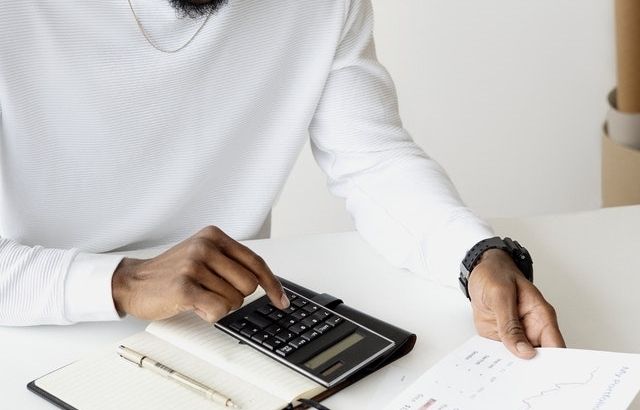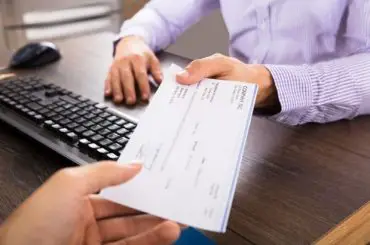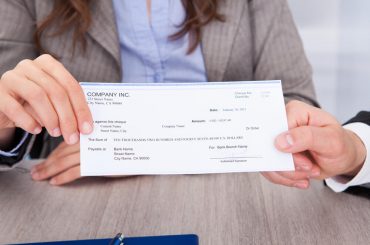Information presented on this web page is intended for informational and educational purposes only and is not meant to be taken as legal, financial, investment or tax advice. We do not accept any responsibility for any trading or investment related losses. Please review our disclaimer on before taking action based upon anything you read or see.
Many people are continually in debt, unable to break free from a difficult-to-break cycle of borrowing. Overdrafts are supposed to be used only when necessary to solve a short-term crisis, yet millions rely on them to fund basic living expenses. What happens if you overdraft your bank account and don’t pay it back?
Simply said, the bank will close your account and report it to consumer reporting agencies; you should take steps immediately if you ever find yourself with a negative balance. Moreover, there are several negative results to paying an overdraft fee, like legal actions may be taken against you, and the fact that you did not pay may be reported, making it difficult to open new checking accounts in the future.
What is Overdraft?
An overdraft occurs when there isn’t enough money in an account to cover a transaction or withdrawal, but the bank allows the transaction anyway. Essentially, it’s an extension of credit from the financial institution granted when an account reaches zero. The overdraft allows the account holder to continue withdrawing money even when the account has no funds or insufficient funds to cover the withdrawal amount.
An overdraft means the bank allows customers to borrow a set amount. There is interest on the loan, and there is typically a fee per overdraft. At many banks, an overdraft fee can run upwards of $35.
How does an Overdraft work?
An overdraft is a good safety net that allows monthly debit orders and timely payments to be honoured. This works even after you’ve exceeded your available funds, helping to protect your credit record and avoid late payment penalties.
An Overdraft works in the following ways:
- An overdraft is linked to your current account, allowing you to borrow money through your daily banking transaction account. This makes it easier to stay on top of your expenditures.
- This means there is no need to track or manage a separate credit account or to transfer available funds between accounts.
- Designed as a revolving facility, an overdraft is a great solution for any temporary cash flow problems, unexpected expenses or emergency costs.
- Because you choose your ‘borrow limit’, you have full control over how much you can borrow every month. Thus, you can keep track of your finances and stay within an amount you can manage.
Why did I get that overdraft fee?
Overdraft fees are charged when you don’t have enough cash in your account to cover a payment you’ve made. And as part of an overdraft protection service, the bank covers the difference for you. Overdraft fees average around $34 for banks.
Understanding Overdraft Protection and Fees

Some banks offer overdraft coverage, which allows customers to overspend their account balances for a fee. Overdraft protection allows you to complete transactions even if you don’t have enough cash in the bank to cover the cost.
An overdraft happens when the value of a bank account goes beneath zero due to expenditures. If you don’t have overdraft protection, checks can bounce, automated payments (ACH transfers) may fail to clear, and debit card payments may be denied. Many banks charge a non-sufficient resources (NSF) fee when this occurs. These botched purchases have extra negative consequences, such as:
- Interchange fees
- Missed payments penalties
- Accounts are deactivated.
- Termination of protection (for insurance)
Individuals may find it embarrassing to have their debit card purchase denied or to have a check or ACH payment bounce. Still, more significantly, it might result in additional financial ramifications. If you’re willing to pay the costs, overdraft protection can help you prevent these problems.
Types of Overdraft fees
While most banks charge similar amounts for each fee, they sometimes apply slightly different rules to how each fee works and when it is charged. The multiple fees involved in an overdraft represent some of the highest checking account fees that banks charge. Some types of overdraft fees include:
Overdraft Fee
The most obvious fee involved in an overdraft is the simply-named overdraft fee, which occurs each time the bank approves a transaction that exceeds your available balance. Typically, banks do not charge the overdraft fee when overdrawing by less than $5.
Every bank and credit union has its limit on the number of overdraft fees it will charge in one day. You can commonly expect banks to charge a maximum of 4 to 6 overdraft fees per day per account, though a few outliers allow as many as 12 in one day.
NSF Fee
The nonsufficient funds (NSF) fee occurs each time the bank chooses to reject a transaction that overdraws your balance. Practically every bank charges the same amount for overdraft and NSF fees, and the two are often printed as one figure in your schedule of fees.
Since a bank must choose between approving and declining an overdraft, a single overdraft will cost you either an overdraft fee or an NSF fee, but never both. However, a few banks distinguish between the two fees when they count the daily maximum. U.S. Bank, for example, will only charge up to 4 overdraft fees per day but counts the limit on NSF fees separately so that you can end up paying eight separate penalties in a day.
Overdraft Protection Fee
Also called the overdraft transfer fee, the overdraft protection fee is charged every time the bank arranges a transfer from another one of your accounts —usually a savings account —to cover the overdraft. Legally, banks cannot include overdraft protection as an automatic account service, so customers must opt into activating the feature.
Online banks often provide overdraft protection for free, but if you are at a standard bank, you can expect to pay anywhere from $10 to $12.50 per transfer. While this can save you money compared to paying overdraft or NSF fees, if the bank’s policy does not include mandatory notifications for each overdraft transfer, you can drain your savings before you realize what’s happening.
Extended Overdraft Fee
The extended overdraft fee is the final fee in the arsenal of overdraft penalties. This fee is sometimes called a sustained overdraft or extended overdrawn balance fee, and it comes into play when you leave your account balance in the negative for a certain number of days. In most cases, you have 5 business days or 7 calendar days to fix your balance before the extended overdraft fee takes your account deeper into the red.
Some banks charge this fee once every 5 days, while others go so far as to assess the fee every day until you bring your balance back above zero. The maximum number of extended overdraft fees you can incur varies by bank.
How to Avoid Overdraft Fees?

An overdraft fee is a cost your bank charges when you spend more money than you have in your accounts. For example, if you have $25 in your checking account and go to the grocery shop to buy $30 worth of groceries using your debit card, the bank will decide whether or not to accept the transaction. So:
The bank may refuse the transaction, in which case you cannot make a purchase. The bank may approve the transaction, lower your balance to -$5 (in this case), and impose an overdraft fee.
If an overdraft fee is imposed on your account, you must pay it unless you can have it waived. If you don’t, you’ll be charged extra negative balance fees, and the bank may close your account and ask creditors for repayment, which will negatively impact your credit score.
With a Bank of America Advantage Savings account, the more you save, the more you can earn
The current annual percentage yield (APY) for Bank of America Advantage Savings is 0.01 percent, the same as most traditional savings accounts. Tier one: A three-month average combined balance of $20,000 to $50,000 is required; a 5% savings interest rate increase and a 25% credit card rewards incentive are available.
Deposit monies earning interest over time is one of the main benefits of a savings account. Money held in a non-interest-bearing bank account or a home safe is losing out on prospective earnings.
Talk with a Bank Representative
If you call a bank’s helpline, they could be willing to forgive the first overspend or returned check fee, especially if it’s the first fee for a different account or any institution in a full calendar period.
This may help you decrease the quantity you owe. However, remember that institutions are not obligated to refund fees and that requesting politely and softly typically yields better results.
If you owe too much or don’t think you’ll be able to fix your overdrawn account, talk to your bank about setting up a plan that will allow you to resolve the issue without being reported to ChexSystems. The easiest way to deal with your bank is to communicate directly and politely.
Take care with your spending.
Before creating any new transactions, maintain a daily ledger and double-check it. Checking your accounts daily and seeing what has been processed and hasn’t is quite straightforward, particularly now that online banking is accessible. It’s also easier to spot bank errors or expenses you may have overlooked if you stay abreast of almost everything personally.
Remember that not all your checks or debit card transactions have cleared yet, so you can’t just glance at your balance at the ATM or online and assume it’s right. This is why it’s crucial to maintain track of your bank account’s balance.
Sign up for Low Balance Notifications.
Most banks provide low-balance notifications, which notify you when your account falls below a specific threshold. You shouldn’t need this if you’re keeping track of your expenditures, but it’s an excellent backup.
Don’t take out an overdraft.
With a few exclusions, institutions only allow you to overspend your account if you join up for their overstock program. You may check out at any time, but once you’ve overdrawn your accounts is a good moment to do so. Transfers will be refused if you do not have the required funds.
Connect Your Checking Account to another Account or Credit Line
To avoid overdrafts, many banks enable you to link additional bank cards to your bank account. Funds are moved from another bank account or debited to your credit card when your account reaches a zero balance.
Some banks offer customers a credit line to assist them in avoiding paying overdraft charges. You may have to repay transaction fees or interests, but it will be less costly than overdraft fees individually.
Sign up for Low Balance Alerts
Many banks have a function that sends you an alert when your account balance falls below a certain threshold. You may establish an alert to get an e-mail or text message from our bank if your balance falls below $50, $100, or whatever minimum level you specify.
You’ll know precisely how much money you have in your account when you get an alert, which might help you budget for the future. For instance, an overdraft fee might occur simply because you lose track of how much money you have on hand. Alerts will also tell you if your credit card information is stolen and used to make transactions.
Read More: What Can Someone Do With a Stolen Check
Overdraft Debt: What to do if you’re Constantly Overdrawn

Make a financial plan.
Making a list of your income and expenses might significantly impact your financial situation. You can’t be in charge of your finances until you know how much money you have and where it’s going (we’ve got some fantastic advice on getting started with budgeting).
You’ll know what you need for bills, living expenses, and loan repayments once you’ve created a budget. This should inform you if you have enough money to pay your monthly overdraft. It can assist you in budgeting, making you less likely to go into debt.
Keep your overdraft separate from your regular banking.
Trying to pay off an overdraft while continuously using it every month is analogous to trying to bail out a ship still taking on water. When you’re not using your overdraft to fund your living expenses, it’s considerably easier to return it.
When you speak with your bank about your overdraft, they may propose separating your overdraft debt from your regular banking by assisting you in opening a new account. This will allow you to escape the pattern of constantly swinging in and out of your overdraft. Maintaining track of your expenses and treating your overdraft like any other loan is easy.
Talk to your bank
Keep your overdraft separate from your regular banking. Trying to pay off an overdraft while continuously using it monthly is analogous to trying to bail out a ship still taking on water. When you’re not using your overdraft to fund your living expenses, it’s considerably easier to return it.
When you speak with your bank about your overdraft, they may propose separating your overdraft debt from your regular banking by assisting you in opening a new account. This will allow you to escape the pattern of constantly swinging in and out of your overdraft. Maintaining track of your expenses and treating your overdraft like any other loan is easy.
Separate your overdraft from your day-to-day banking
If your bank cannot separate your overdraft debt from your primary account, it may be worthwhile to create a new bank account with no overdraft with a bank with which you have no obligations.
This new account may be used to deposit your earnings and manage your daily finances. Your former bank account will stay overdrawn, but you will be able to address it as average debt, and it will be separated from the rest of your money.
Start chipping away at your overdraft balance.
This is the most challenging part. Making a plan is far easier in the real world than sticking to it. This will entail sticking to your budget and paying your bills on time each month. It’ll probably not be easy at first, but you’ll be more driven as you see your balance improve.
Unexpected events may make it challenging to stay within your budget, but a smart budget can help you plan for most of them. That is why, while creating a budget, it is critical to strive to account for all possibilities.
How to Avoid Overdraft Fees?
Bank account overdrafts can be avoided, especially if the account holder knows that he or she may spend beyond the amount of his or her money in the account. Here are some helpful ways to avoid overdrafts and the accompanying fees:

Monitor your account balance regularly.
This sounds very simple, but many people often forget it. It is by constant checking that the account holder can determine how much he or she can spend. This can be easily done with today’s technology, such as a bank’s mobile app.
Speak with the bank
If one thinks that the existing authorized overdraft isn’t enough, then the account holder should go and talk to the bank and request a temporary increased overdraft limit. The bank usually grants such a request if they have responsibly managed their account.
Read bank letters
Many are guilty of disregarding bank letters, thinking they are just routine communication. However, they sometimes contain important information about your bank account, including notices of an overdraft.
Transfer accounts to another bank
Some banks are bank account overdraft-friendly and don’t charge fees or interest. They are just thankful to get clients to open and maintain an account with them. If you are prone to overdraft situations, it may serve you well to seek out a bank for your accounts.
Why would you need Overdraft Protection for your Bank Account?
Overdraft protection is a service your bank provides that ensures your transactions are covered if you have insufficient funds in your checking account. The bank will automatically move funds you have available in another linked account to the overdrawn account.
Most consumer advocates recommend against getting overdraft protection for ATM and debit card transactions. You must opt into your bank’s coverage if you want overdraft protection for debit card and ATM transactions.
Overdraft Protection vs Overdraft Coverage
The distinctions between Overdraft protection and overdraft coverage have been highlighted in the table below:
| Overdraft Protection | Overdraft Coverage |
| You connect an acceptable account to your bank account at this point. | With the use of this service, financial institutions may accept certain transactions even when there is insufficient cash. |
| When your account balance is negative, Overdraft Protection borrows funds from another account to make up the difference. | Your expenditures could be paid in your place by a third-party company if you have Overdraft Coverage. |
| A cheaper cost/fee structure applies to overdraft protection since money is only taken out of your account. | Because a third-party company provides funds, the cost/fee structure for overdraft coverage is greater. |
| To add further security levels, you may connect several qualified accounts. | Typically, just one account is involved. |
| Savings, a money market, a second checking account, and various lines of credit are all examples of eligible accounts. | Checks, automated payments, ATM withdrawals, and charges on ATM/debit cards are a few examples. |
Frequently Asked Questions
What if your checking account is red, and you don’t pay it off?
If you do not even settle off the negative number, the bank will close your account and submit you to a credit agency for having an account with a negative balance. If you owe money to a bank, the bank will demand it back.
What happens if my bank account is negative for too long?
Overfilling often (or keeping your balance negative for a lengthy period of time) might have serious consequences. Your institution may close your account and refer you to a credit agency, making it harder for you to get a new account. (And the institution’s deficit will still be your responsibility.)
Do you have to pay back an overdraft?
An overdraft may be a costly loan, so if you are in a position to begin repaying it, do so as soon as feasible. Unlike loans or credit cards, an overdraft does not have a repayment schedule. Thus it is up to you to pay it off.
Can you go to jail for an overdrawn bank account?
Overdrawing your accounts is an uncommon occurrence. As per the National Check Fraud Center, many states have the power to sentence someone to prison for overcharging their accounts. Nonetheless, the reasons for doing so must be strong enough to justify federal indictment.
What happens after 7 years of not paying debt?
Even while loans remain on your credit record after seven years, removing them can help your credit score. Only negative information on your credit record is removed after seven years. Positive accounts that have been open for a long time will remain on your credit record.
How long can your bank account be overdrawn?
The repercussions of having NSF or overdrawing your checking account items will vary depending on your bank’s policy, whether or not you have a linked savings account, and whether or not you have chosen overdraft protection.
The time it takes for banks to close negative accounts varies depending on the size of the overspend and the user’s banking record. And that is when your devotion to your institution comes into play. Many individuals wait around 30 and 60 working days, while some wait as long as four months.
What happens when you owe bank money?
Money owed to your bank is a non-priority debt, which means you won’t lose your house if you don’t pay your bills, but you will be brought to court and required to pay what you owe – typically with additional fees. If you owe money to your bank and cannot pay, contact your bank immediately.
Is it possible to withdraw money with inadequate funds?
Suppose you’ve used an ATM while your credit limit was still available. In that case, the bank may choose controversial action, such as putting the account in the negative and activating an overdraft fee.
If you haven’t used an ATM yet, be sure to keep track of your withdrawals and, when possible, use cash or debit cards. Using less electronic banking means fewer transactions on the system and less need for credits and fees.
What happens when a bank closes an overdrawn account?
You won’t be able to make checks on your bank account if it’s closed due to overdrawn or any other reason. So, you will face legal consequences if you do so. You might be sued in small claims court by a merchant for the amount you owe.
What happens if you go into your overdraft?
When you fall into overdraft, it will appear as a negative figure on your bank statement or online banking. When this happens, the bank will usually charge you fees, so try to prevent it as much as possible.
Can I close my account with a negative balance?
Banks usually do not close accounts that have a negative balance. According to the Office of the Comptroller of the Currency, so even if you request the account be closed. At the same time, it is in an adverse condition, and the bank is unlikely to comply. You owe money to the bank if you have a negative balance.
Bottom Line
Overdraft fees may be a pain when you’re already down, but preventing them is simple. Because not all banks provide these alternatives, think about using your credit card.
Overdraft protection on your bank account is useful, but it isn’t inexpensive. According to the Consumer Financial Protection Bureau, the typical overdraft fee charged by retail banks is $34. (CFPB).
While the possibility of paying a penalty charge for overdrawing your account is frightening. Several methods prevent it, one of which is to use your credit card.
Overdraft fees may be a pain when you’re already down, but preventing them is simple. However, because not all banks provide all of these alternatives, you may be restricted to your bank offers.
If that’s the case, try transferring banks to a bank where you have a credit card or transferring banks to one that provides one of the other options we listed. Getting rid of overdraft fees once and for all would save you money and give you more peace of mind.
An ‘unauthorized’ overdraft occurs when you go overdrawn without first getting permission from the bank. This might harm your credit score and make it more difficult for you to secure a loan in the future.
Personal Advice
Only use an overdraft in an emergency or for short-term borrowing. An overdraft must be managed like any other debt to prevent expenses from spiralling.
Additionally, an overdraft is a loan that must be paid back immediately. Before any repayments are deducted from your account, ensure you have enough money in your current account or an appropriately established overdraft limit. An arranged overdraft is one where you and your bank or lender have agreed on an overdraft limit.
References
- https://www.bankrate.com/uk/current-accounts/how-do-overdrafts-work/
- https://www.hsbc.co.uk/current-accounts/overdrafts-explained/
- https://www.commbank.com.au/articles/banking/how-do-personal-overdrafts-work.html
- https://www.regions.com/help/products-services/checking-accounts/overdraft-services/overdraft-protection-vs-standard-coverage




